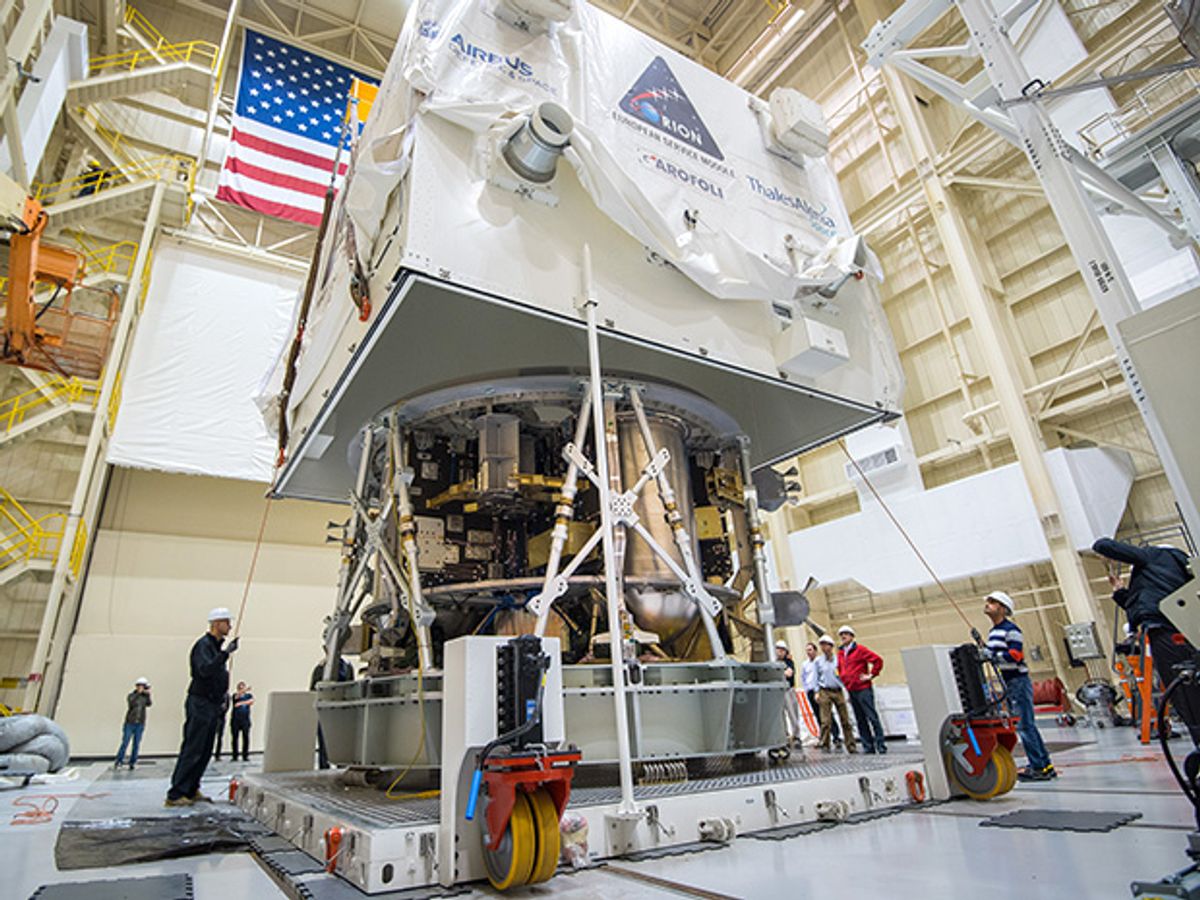In a major step towards NASA's efforts to regain the ability to send humans into space, the structural test model of the Orion spacecraft’s service module has been delivered for testing at the agency's Plum Brook Research Station in Sandusky, Ohio. The module was built by Airbus Defence and Space for the European Space Agency, representing the first time that Europe has collaborated with NASA on a project of this kind.
The European Service Module (ESM) is the powerhouse for Orion, providing its electricity and propulsion as well as carrying the air and water for the crew during voyages to the vicinity of the moon. It is based on ESA's Automated Transfer Vehicle (ATV); five ATV’s were built to supply the International Space Station and also to provide a propulsion system for altering the ISS's orbit.
Because of their towing capacity, the ATVs were frequently called Space Trucks; Orion will serve as a “Space Taxi,” taking crew to the ISS and returning them home, as the Russian Soyuz system currently does. But Orion is also the cornerstone of NASA's plans to take humans beyond low Earth orbit: in the short term, back to the Moon, with the eventual goal of journeying onwards to Mars.
While the ATV was an autonomous craft capable of flying itself and docking with the ISS, the ESM does not have its own on-board computers. It relies on the Orion Command Module for processing. This, said Oliver Junkenhofel, program manager for ESM at Airbus, has necessitated a different approach for his team: working closely with his project partners in the United States. “We have all the usual spaceflight challenges of reducing weight and certifying the systems, but we also have to handle the interfaces,” he said. “But our experiences with the ISS have been very valuable. That has proved we can work on complex, manned space projects with multiple partners, and it's a model for this work.”
While at Plum Brook, the ESM will be subjected to vibration tests to mimic the effects of the launch, and will be bombarded with intense sound waves to simulate the effects of passing through the layers of the atmosphere at supersonic speeds. (These acoustic tests will also simulate the effect of the rocket engines of the Orion abort system, which sits above the capsule and will pull it off the launch vehicle to save the crew if an emergency occurs at launch.) These tests will take about a year, and will inform the Airbus team if the module needs reinforcement as they build the flight module.
A test version of the crew module for Orion, built by prime contractor Lockheed Martin, was recently put through its paces at Plum Brook. The first model actually destined for flight is currently under construction at Lockheed's facility in Louisiana. Refining the interfaces between the command and service modules was the most challenging part of the project, according to Mike Hawes, program manager for Orion at Lockheed Martin. “We work together with Airbus as one team on this,” he said. “But ensuring that all the systems work together has been demanding.”
The first flight for Orion—an unmanned two-way trip into lunar orbit —is scheduled for 2018. ESA is currently contracted to provide the service module solely for this mission, but it already expects to supply service modules for subsequent manned missions and is planning accordingly. The space agency has been invited to bid for these subsequent projects, says ESA development head Nico Dettmann, although no final decision on the contractors is expected until early in 2016. “But as far as we're concerned in terms of planning,” says Junkenhofel, “we're part of the plan for going to Mars.”



